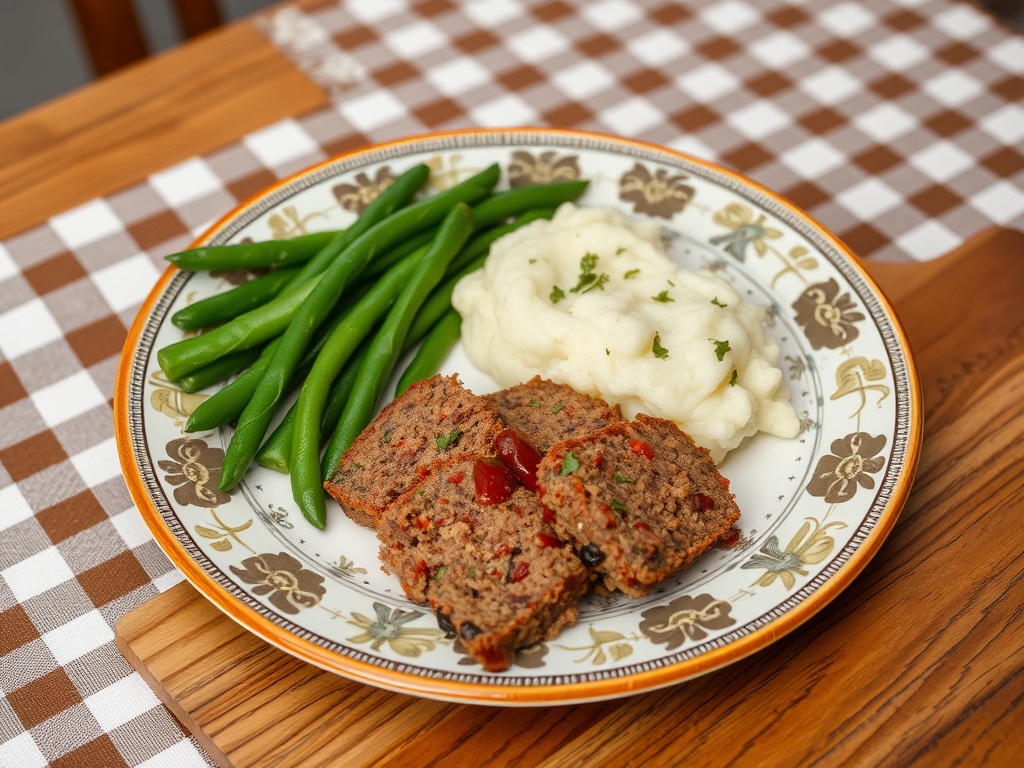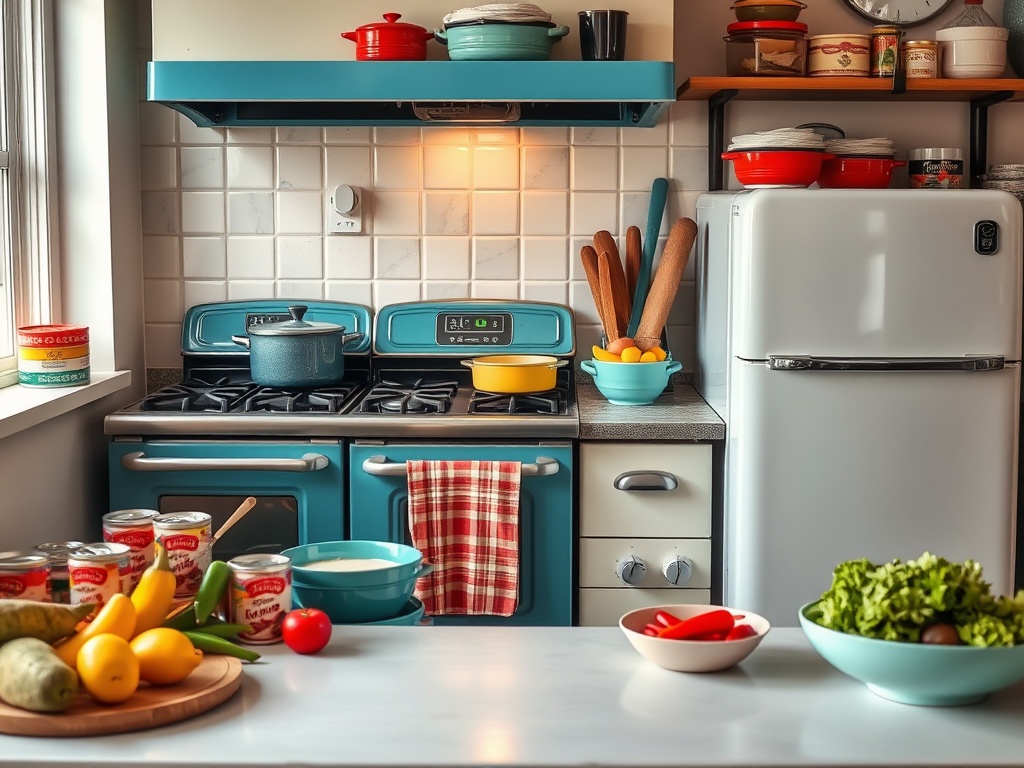My Culinary Journey: A Week of Cooking Like a Boomer

Cooking has never been my forte; in fact, I would go as far as to say that I’m an awful cook. If a meal can’t be tossed into an air fryer at 180 degrees and served within 15 minutes, then I’m simply not interested. My culinary skills are limited to boiling pasta, and on particularly good days, I might manage to prepare rice that isn’t a gloopy mess. Anything beyond that feels like an insurmountable challenge. I can’t completely shoulder the blame for this; my upbringing was steeped in ultra-processed foods (UPFs), and my mother had a distinct aversion to cooking. Occasionally, we would have a casserole, but the only truly comforting homemade meals I remember were those prepared by my grandmother. She always served something wholesome and delicious—typically a hearty cottage pie or a warm stew, accompanied by an abundance of green vegetables.
During my childhood in the early 2000s, my diet revolved around processed foods, complemented by a steady stream of snacks like chocolate and ice cream. That was the norm, and I relished it. Fast forward to my current life at 22, and I find myself stuck in a monotonous culinary routine, consuming similar meals every day: bacon and eggs for breakfast, two servings of whey protein powder, a pasta dish for lunch, and either minced meat or chicken for dinner. Indulgent junk food, in the form of a burger or pizza, is a weekly ritual. Having grown up amidst the prevalence of UPFs, energy drinks, and protein bars, these items are still a staple in my diet. However, I’ve recently begun to ponder whether my grandparents’ approach to cooking had merit all along.
In the past decade, bowel cancer rates in individuals under 50 have surged dramatically in England, outpacing much of the rest of the globe. Experts have attributed this troubling trend to shifting dietary patterns, particularly high consumption of red and processed meats, paired with insufficient fiber intake. We are also witnessing record levels of obesity and Type 2 diabetes, especially among those under 40, which may be linked to the nation’s eating habits.
Dieticians have concluded that the eating patterns of older generations in the UK were generally healthier than those prevalent in the 2020s. Observing my great-grandmother, who at the age of 87 walks everywhere, rarely complains of aches or pains, and prepares homemade meals each evening, makes me curious about the role her diet has played in her remarkable health. Helena Barham, a nutritional therapist and founder of Nourish&Be, asserts that a diet rich in less-processed foods—like those consumed by baby boomers—is undoubtedly healthier. “The food we see today is riddled with ingredients that wouldn’t be recognized as food a century ago—emulsifiers, additives, preservatives. The beauty of home-cooked meals is that we can see what goes into our food,” she explains.
Barham emphasizes that our modern diets are fostering unhealthy habits and health issues. “We are generally consuming more food and eating more frequently, which gives our bodies less opportunity to process the energy we are providing. This has dire consequences for our metabolic health.” Predictions indicate that by 2035, nearly 10 percent of the population will be diabetic. “Our genes haven’t changed significantly in the past 100 years. These are environmental issues, and a significant part of this is due to the unrecognizable changes in our diets and eating habits,” she adds.
With these insights in mind, I resolved to embark on a week-long experiment, swapping my UPF-laden diet for a boomer-inspired one to see how it would affect me. Choosing what to include in my meal plan proved to be my first challenge. I decided to base my weekly meals on the recommendations from my nan and her children, all born between the 1930s and 1960s. Their diets—featuring classics like bangers and mash, cottage pie, porridge, and copious amounts of tea—seemed to consist of less processed food and more straightforward, homemade dishes. While they did consume red meat, it was more likely in the form of beef mince rather than greasy sausages or fatty bacon. Each meal in my plan for the week would include a side of green vegetables, such as broccoli, green beans, or a fresh salad.
The first change was simple. I swapped my morning cappuccino, which was filled with two pumps of syrup and a teaspoon of sweetener, for a traditional milky brew. It’s one of the few things I can make well, and the taste was exceptional; it truly felt like a cup of warmth. However, I soon realized it was no substitute for my beloved coffee, and I found myself wistfully glancing at my coffee machine.
The real challenge came next: preparing the actual food. When I moved out of my family home at 18, the most adventurous dish I had mastered was spaghetti bolognese, using a jar of pre-made sauce. My kitchen utensils were limited; I didn’t even own a can opener and had just one small saucepan. I did pride myself on having good-quality knives (approved by my nan) and a chopping board, though I hadn’t sliced an onion since my school food tech lessons. Ready meals had long been my go-to solution, and when they failed, I would resort to toasting some bread. Now, I was facing a week of following recipes (with a lot of steps) just for dinner.
Rather than scouring the internet, I decided to ask my nan for her cottage pie recipe, a request met with a snort of derision—she was shocked that I was actually attempting to cook. Her idea of a recipe consisted of “a pinch” of this and “however much you think it needs” of that. A similar inquiry about her curry recipe yielded a quick list of ingredients, many of which I didn’t have on hand.
Undeterred, I stood over my kitchen counter, chopping garlic and onions for what felt like hours, wishing I had some gadget to do it for me. Eventually, I managed to gather the right ingredients to make the cottage pie and congratulated myself on successfully completing it. To my surprise, it turned out rather well, which was fortunate since it consumed my entire evening.
After a long day, I finally sat down to enjoy my creation—only to realize I had forgotten the gravy! Undaunted, I persevered; the dish was both nostalgic and comforting, albeit a bit dry. The next morning, I had a bowl of porridge—something I usually jazz up with syrups, protein powder, chocolate, and fruit. Without those enhancements, it was pretty bland and somewhat disappointing. My lunch that day was a simple sandwich, inspired by the older generations in my life who often rely on sandwiches for midday meals.
On day two, I attempted a homemade chicken curry. I tossed everything into my tiny saucepan and whipped up a single serving. To my delight, it was delicious; though it wasn’t as spicy as I remembered from childhood, I soon realized that “a pinch” in my nan’s kitchen meant “a handful.” Who would have thought that incorporating ingredients like onion and garlic, which I had previously dismissed as unnecessary, could elevate the overall flavor?
As the days progressed, I prepared homemade burgers and two additional servings of curry, which felt increasingly less daunting than my initial attempts. One crucial lesson I learned quickly was the need to allocate an hour or two each evening for cooking fresh meals from scratch. No longer could I expect to eat within 15 minutes.
Throughout this culinary experiment, I came to several conclusions. Firstly, coffee will always reign supreme over tea. Even better than that, a cold can of Pepsi is hard to beat. Secondly, the aroma of food being cooked from scratch is incredibly comforting and homely—far more delightful than the sound of an air fryer whirring for 12 minutes before delivering what can only be described as dry chicken (which had been my go-to supper until recently, paired with a side of cucumber to avoid the hassle of cooking vegetables).
- The smell of home-cooked meals is heartwarming.
- Cooking requires time and dedication.
- Green vegetables do improve the overall meal.
With the increased intake of fruits and vegetables, I felt healthier, although I couldn’t help but wonder if that perception stemmed from simply seeing green on my plate every day. However, bloating became an issue. The meals I prepared contained more salt and carbohydrates than I was accustomed to, and my stomach was clearly reacting to this shift. I also noticed a slight weight gain, prompting me to question how much I would have gained if this were my regular diet.
Dietician Nichola Ludlam-Raine, author of How Not to Eat Ultra-Processed, pointed out that the diet I was following wasn’t without its flaws. “It often involved higher amounts of saturated fats (the preferred fat for heart health is unsaturated) due to increased meat consumption or larger portion sizes,” she noted. This could explain my stomach discomfort.
I was also anxious about my protein intake. I typically consume around 150 grams daily, with 60 grams coming from powders and bars, and the rest from meat and eggs. My breakfast porridge, sandwich lunches, and carb-heavy dinners likely provided only half of that amount, with a greater emphasis on carbohydrates than I was used to.
On the positive side, I found that I didn’t feel the urge to indulge in my usual Friday night takeaway. The chef at my local pizza joint might have wondered if I had gone on holiday, but I was quite content with my traditional English breakfast (substituting chicken sausages to avoid red processed meat) at 7 PM that evening.
So, did my experiment inspire a permanent shift in my eating habits? Not quite. Instead, I envision finding a balance between my Gen Z lifestyle and a more boomer-inspired approach; fewer protein bars and more home-cooked meals that leave me feeling full and satisfied, all while avoiding the disappointed looks from my grandparents when they inquire about my dinner choices. However, I’m definitely tossing the porridge in the bin, and I’m welcoming Pepsi back into my life with open arms.




